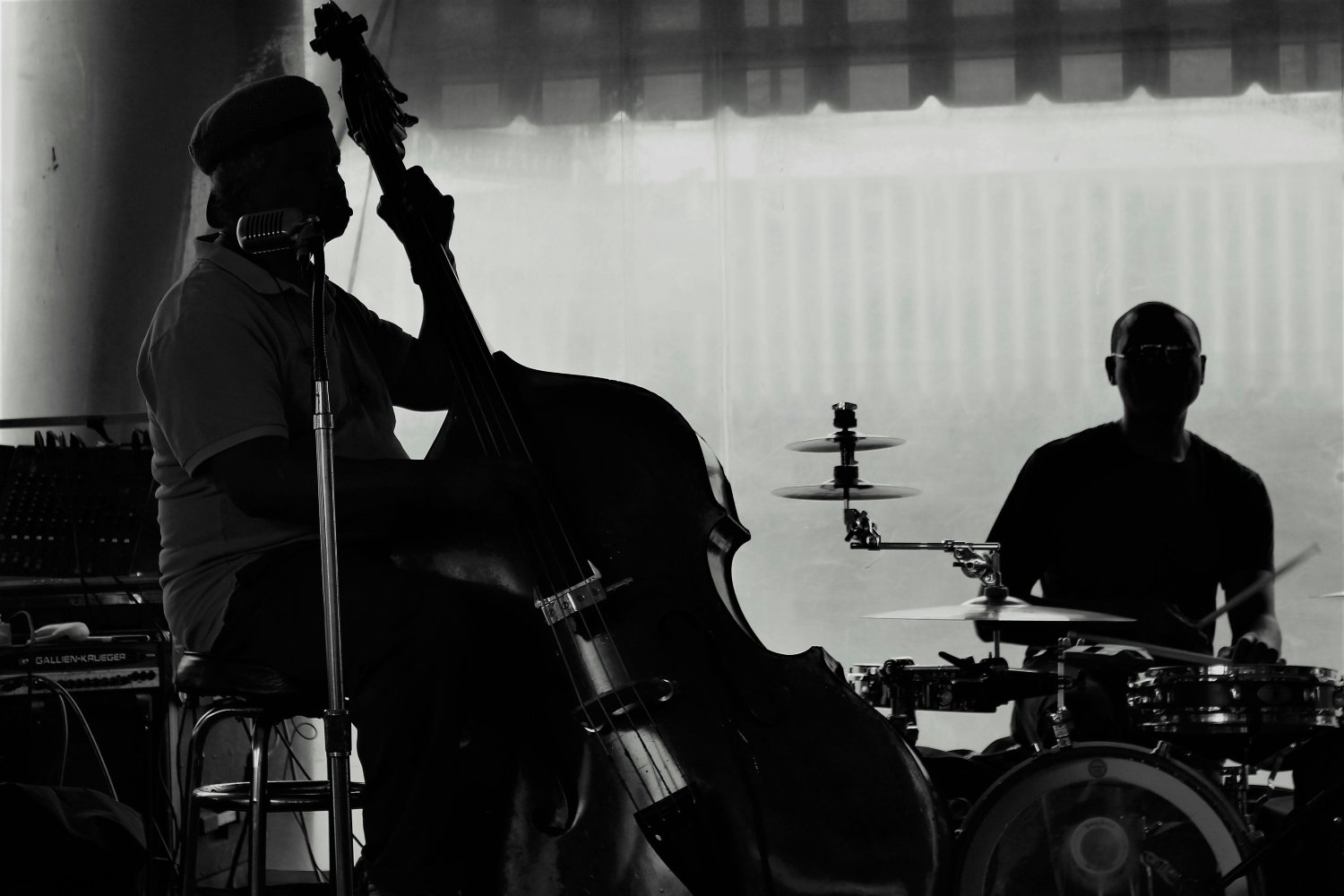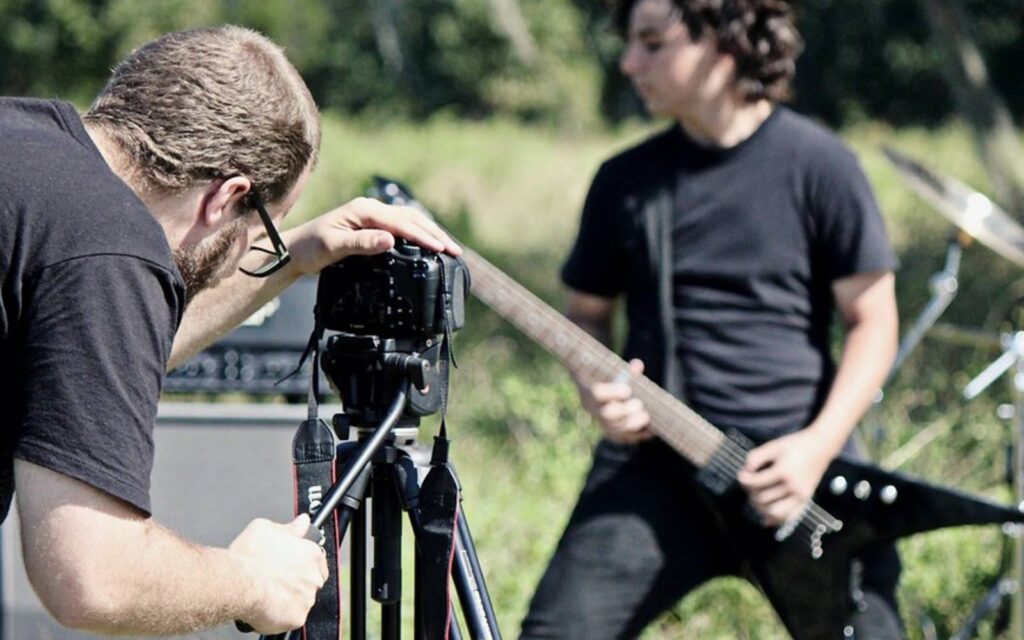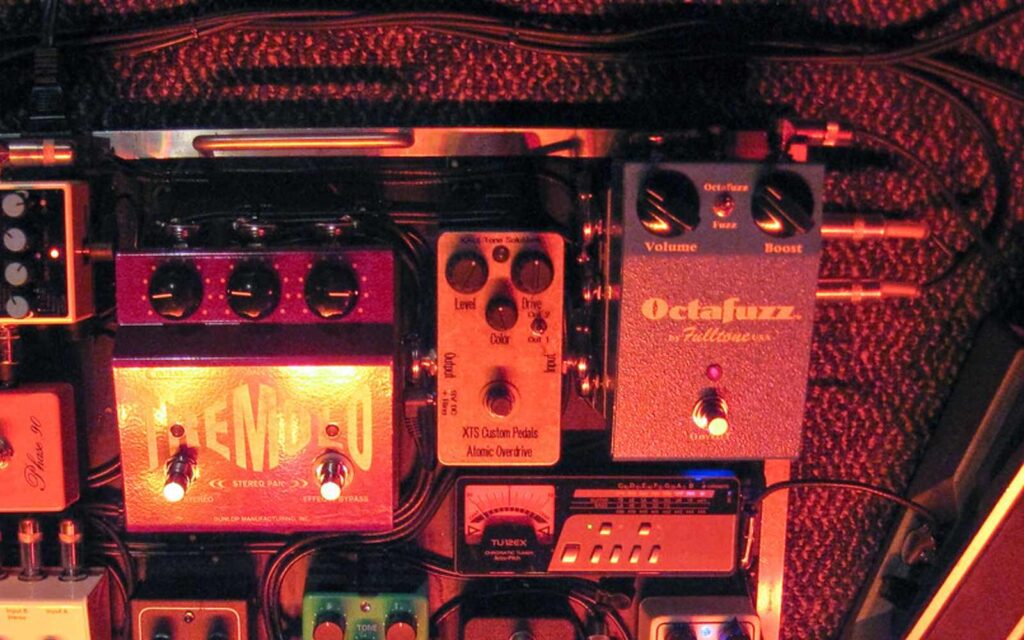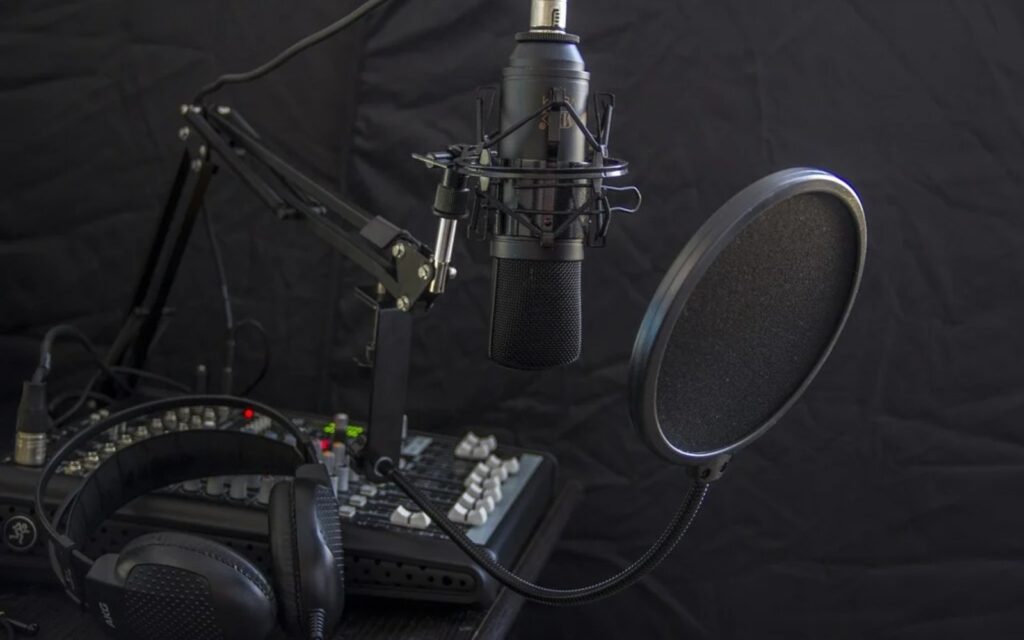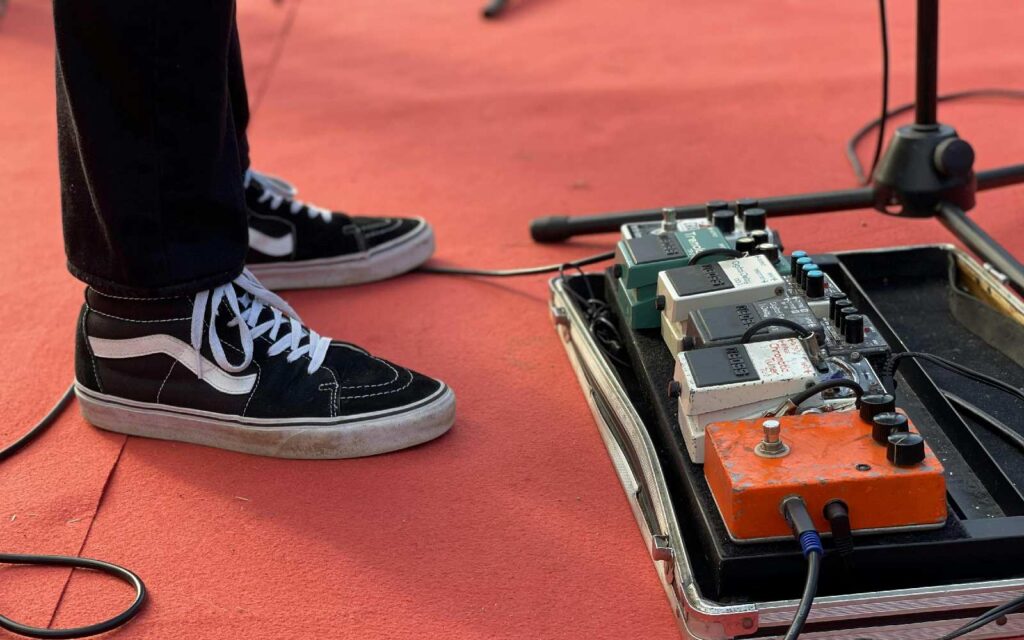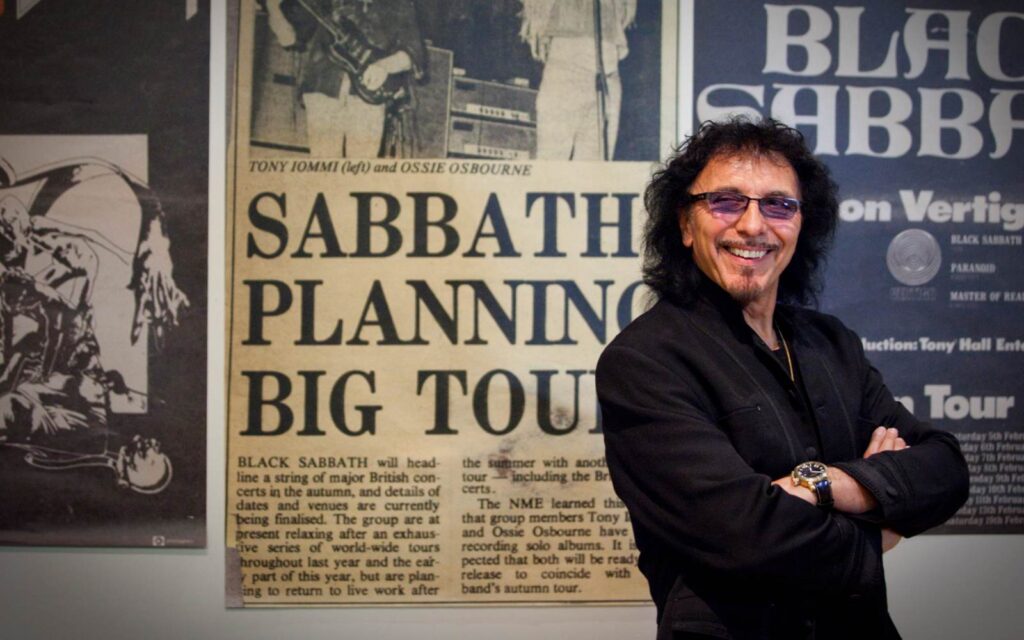“My ego only needs a good rhythm section,” the volatile jazz trumpeter Miles Davis would say.
Soaring lead vocals, wailing guitar solos and jittering keys are one thing, while albeit very impressive, they’re built on the context of the rhythms beneath them. The rhythm section of a band provides the foundation, the root, for harmony to be based on, the groove to be defined from, being ultimately what a makes a song danceable (or not!)
Here’s some stellar examples of the best rhythm sections!
“My ego only needs a good rhythm section,” the volatile jazz trumpeter Miles Davis would say.
Read up on all the latest features and columns here.
Jazz drummer Max Roach commented, “The rhythm sections, drummers in particular, are the unsung heroes of the music. It’s the rhythm section that has changed the styles from one period to the other.”
Some say a good rhythm section keeps the guitarist from flying up his or her ass when taking a solo.
Others say it works when the bassist and drummer react and adapt, speak the language and be versatile.
JOHN PAUL JONES & JOHN BONHAM
Led Zeppelin had their first rehearsal on August 12, 1968 in a tiny basement in Central London’s Gerrard Street. It was the first time the rhythm section met.
Jones and Jimmy Page knew each other from the 1960s session days and actually played together on Donovan’s “Sunshine Superman”, Jeff Beck’s “Beck’s Bolero” and P.J. Proby’s “Jim’s Blues”.
Robert Plant and John Bonham played around Birmingham as teenagers, and Page met them when he journeyed there to check them out.
Introductions
After introductions and playing The Yardbirds’ “Train Kept a’Rollin’,” they burst into laughter. It was instant chemistry and very powerful, and they knew they were plugged in.
The soft spoken creative Jones, recalled: “The first thing to strike me about Bonzo was his confidence. He was a real cocky bugger in those days.
“Still, you have to be to play like that. It was great, instant concentration. He wasn’t showing off, but was just aware of what he could do. He was just rock solid.”
Of the way they worked: “With Bonzo and I, we just listened to each other rather than look at each other and we knew immediately because we were so solid.
“From the first count in we were absolutely together.”
CHARLIE WATTS AND BILL WYMAN
Rather than look at it each other during a Rolling Stones show, Charlie Watts and Bill Wyman looked at Keith Richards.
“Our band does not follow the drummer. Our band follows the rhythm guitarist, who is Keith Richards,” Wyman told Guitar Player in 1978.
“Immediately, you’ve got something like a 1/100th second delay between the guitar and Charlie’s lovely drumming…
“Add to that the fact that I’ve always been able to pick up chord structures very quickly, so I tend to anticipate what Keith’s going to do…and that puts me that split second ahead of Keith.”
PHIL RUDD & CLIFF WILLIAMS
After AC/DC cut bassist Mark Evans adrift in May 1977 after recording Let There Be Rock, they wanted a technically better player to lift the band.
Until they found that person, they’d rope in temporary players for each gig.
Malcolm Young switched over to bass (“he was a wicked bassplayer as well,” said Phil Rudd) but had to move back to guitar as AC/DC songs were written for two guitars, and elder brother George stepped in for some shows but declined to stay on because he didn’t want to tour.
Starting At 13
Growing up in London and Liverpool, and listening to the same rock music as Rudd (Stones, Beatles, Deep Purple, Motown), Cliff Williams started playing bands at 13, and dropped out of school at 16.
By 1977, he was planning to give up music after his bands Home and Bandit failed to get anywhere.
But some friends encouraged him to try out at AC/DC’s auditions in London.
Williams didn’t really know much about them, although he’d seen them on TV’s Top Of The Pops and thought they were having fun.
Audition
At the first audition, their manager gave him some AC/DC records to listen to at home.
He was called back for two more jam sessions, and finally got the job on May 27, 1977.
The new rhythm section struck up instantly. “He just had a tremendous sense of swing about him,” Rudd said. “Which is what everyone else in AC/DC has.”
Williams was equally a fan: “Phil is a hell of a drummer to play with, solid as a rock, like a metronome. He has a tremendous feel and the best for AC/DC.”
The band immediately returned to Sydney to work on Powerage, warming up with two secret shows at the Bondi Lifesaver club.
Williams got delayed in England over visa issues but joined them as soon as he could.
“We recorded it in about six weeks, that’s how small the budget was.”
AC/DC have gone through many lineup changes. But Rudd and Williams will be playing together when AC/DC tour Australia in 2024/5.
SLY DUNBAR & ROBBIE SHAKESPEARE
Emerging in the ‘70s as reggae exploded outside Jamaica, Sly & Robbie, aka The Riddim Twins, played on 200,000 tracks.
These included on those by reggae pioneers Peter Tosh. Gregory Isaacs, Black Uhuru and Errol Dunkley, as well as superstars Bob Dylan, Grace Jones, The Rolling Stones, Robert Palmer, Herbie Hancock, No Doubt, Sinead O’Connor, Bill Laswell…and Paris Hilton.
A great rhythm section where one instinctively pulled back when the other stretched up, they could hold it down with brutal beats but also built up atmosphere with spacious mini-motifs of their own.
Totally different as people – Sly was laid back with impeccable manners, the burly Robbie spent jail time on gun charges and had a reputation for not being screwed with – their legacy gave reggae a totally different sound as it spread across the world.
FLEA & CHAD SMITH
The Flea-Chad Smith partnership played a remarkable contribution to uplifting The Red Hot Chili Peppers’ early punk/funk fusion and the expansion into more experimental fields which needed more balance and intricacy.
Smith, whose technique uses ghost notes and a fast right foot, joined the band in December 1988.
Despite the tightness of their musical partnership, Melbourne-born Flea admitted on Rick Rubin’s Broken Record podcast the two are not close.
Funny
“With Chad it’s funny, because my relationship with Anthony is very personal and very much brother-like, and my relationship with John is also very personal, very emotional, very intuitive, very connected.
“But my relationship with Chad is that we don’t hang out outside of the band. Never have. I’ve probably been to his house once, it’s like this different thing.
“It’s just this very grounded, rhythmic thing, there’s no bullshit about it. Not that the others [relationships within the band] have bullshit about it either, but, we get down, we look at each other, and that’s how we talk.
“Very rarely do we speak about emotional things, about spiritual things, even things that trouble us or things we aspire to. It’s just, we get down and fucking hammer out some grooves. [laughs].”
LES CLAYPOOL & TIM ALEXANDER
Acclaimed as one of the most unique minds in rock music when Primus emerged from California in 1984, they were dubbed “funk metal” because of how Les Claypool’s bass and vocals dominated the sound.
Why it worked was the way drummer Tim Alexander learned when to keep out of the way and when to drove the engine.
“When we got together, Primus sounded exactly how I had music in my head,” he explained.
“We were able to do odd things, which fitted in with my approach as a drummer – looking for new sounds and not get stuck in the kick-snare-hit hat triad.”
Alexander coloured Clayton’s imagination with a 19-piece kit (including some prototypes) that allowed him to get a huge array of sounds.
As for Primus’ penchant for improvising, Alexander’s strategy was, “Know your limitations and where you can go.
“Keep your experimenting for the rehearsal room. But at the show, with the audience, don’t lose the other players.
“You listen to the band as a whole, not to the drum beat. I’m not listening to me.”
On something like “Frizzle Fry” or “Mr. Krinkle”, both reached heights of excitement and creativity that were hard to even imagine.
JON FARRISS & GARRY GARY BEERS
INXS drummer Jon Farriss and bassist Garry Gary Beers were born three years apart.
But the whole band grew up as a band of brothers, listening to a wide range of music.
This ranged from soul and R&B and the British beat boom with The Beatles and The Rolling Stones, 60’s Latin like Sergio Mendez, Astrid Gilberto and then disco, funk, metal, punk, ambience and 80’s tech.
More Than Rock
INXS were always more than a rock band, and in 1980s America they were one of the first white bands to draw black audiences.
Their rhythm section was tight right from the early days.
“Jon’s the best drummer that ever sat behind a drum kit,” declared Beers, while US super-producer Nile Rodgers who produced their hit “Original Sin” admitted, “My inspiration to work with INXS was after seeing their drummer Jon Farriss perform live.”
Jon said, “I took drumming very seriously. In INXS. I was the captain of my own ship and was trusted to come up with the best expression that suited a track.”
Garry saw his role as “to keep it simple because it was a big band with three guitar players and keyboards, and just keep it solid.”
Focus On The Groove
Farriss and Beers’ focus on the groove grew even tighter as Michael Hutchence and Andrew Farriss’ songs became more adventurous and epic.
Jon was one of the first to use computer-sequencing software in the ‘80s to add punch and sounds to his muscular drumming.
Garry used his flair for woodwork and electronics to build his own line of bass guitars.
In 2021, he released his GGB Basses handmade boutique line of bass guitars, built to replicate the old ’58 Fender Bass he played in INXS, with pickup electronics which he invented and patented.
AL JACKSON JR & DONALD “DUCK” DUNN
Drummer Al Jackson Jr. and bassist Donald “Duck” Dunn spent their lives inspiring generations of players, both as members of the house band for Stax Records in Memphis in the 1960s, and the splinter group Booker T & The MGs, of “Green Onions” and “Time Is Tight” fame.
They were both born in Memphis, but their backgrounds were different.
By 14, Jackson was playing in his father’s swing/jazz outfit, later using a combinations of Ludwig and Rogers drums, and Zildjian cymbals.
Dunn’s father made candy and dead against his son doing music, fearing he’d become a drug addict.
He worked in the candy factory and in an engineering store repairing air sirens.
At 16 he picked up the bass, and after trying out the cheaper Kay before buying his first Fender in 1958.
The way they worked together was sublime.
Jackson aka “the human timekeeper” used a simple backbeat, steady hi-hat and a counter-rhythm on the kick. Dunn’s signature was a walking line or a repeat riff.
This allowed guitarist Steve Cropper and keyboards player Booker T. Jones to come up with the magnificent riffs that became part of the vocabulary.
Among the hits they appeared on were Sam & Dave’s “Hold On (I’m Coming”), Otis Redding’s “(Sitting On The) Dock Of The Bay”, Wilson Pickett’s “In The Midnight Hour” and Eddie Floyd’s “Knock On Wood.”
In the ‘70s Jackson also wrote and produced for Al Green (“Let’s Stay Together”), Bill Withers, Elvis Presley, Eric Clapton, Aretha Franklin, Major Lance, Ann Peebles, Rod Stewart and Donny Hathaway.
Dunn kept the classic Stax sound alive by playing in The Blues Brothers Band. He was hand picked by John Belushi and Dan Aykroyd – the Jake and Elwood characters in the 1980 Blues Brothers movie.
On the night of September 30/April 1, 1975 Jackson was shot five times in the head by intruders in his Memphis home and died aged 37.
On May 13, 2012 while Duck was in Tokyo for a series of shows he was found dead in his hotel room, apparently of a heart attack at 70.
Read more about Garry Gary Beers’ journey that led him to building his own bass guitars in GGB Basses.
